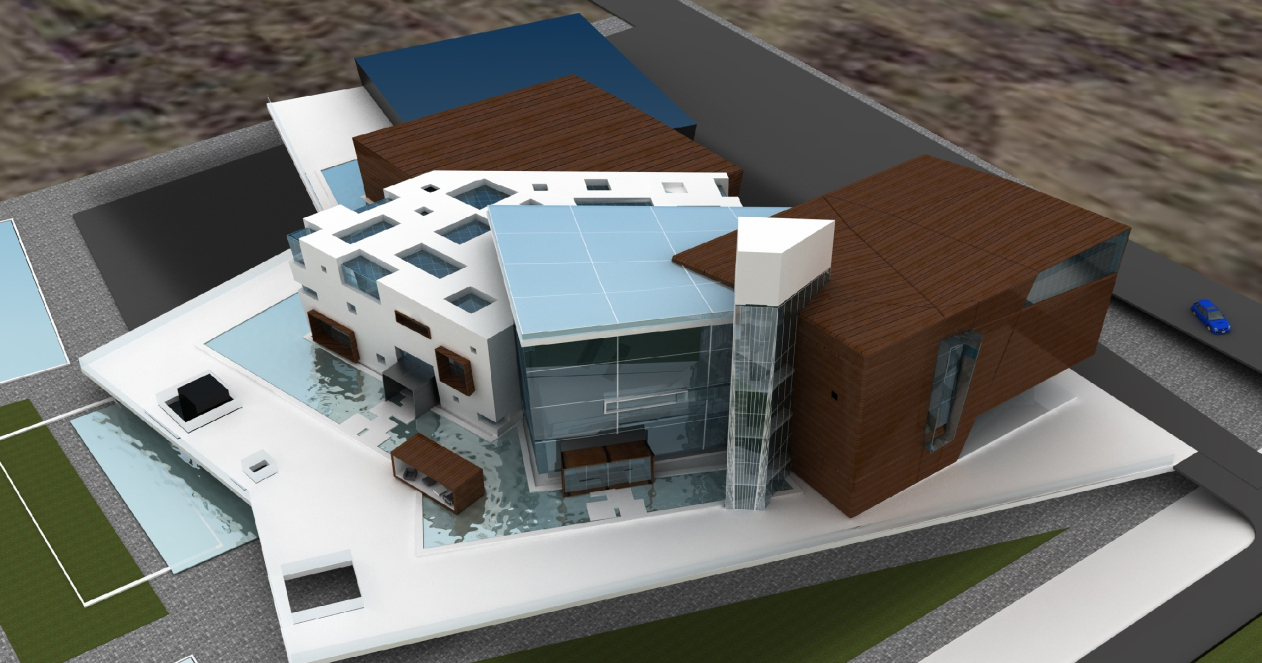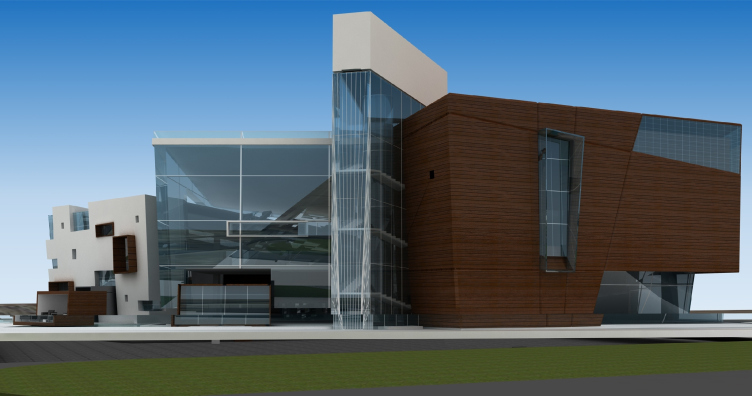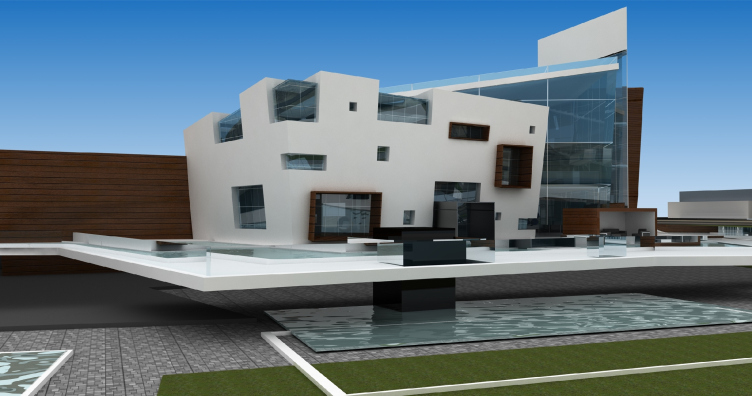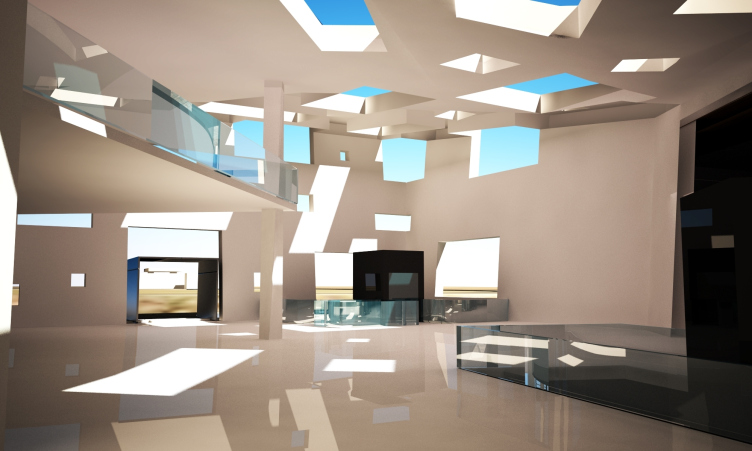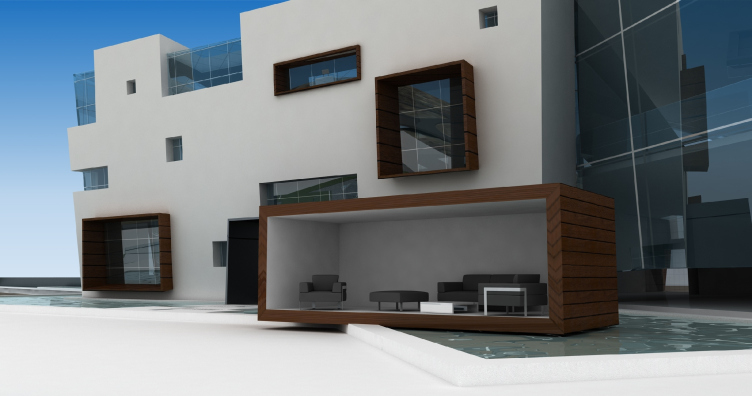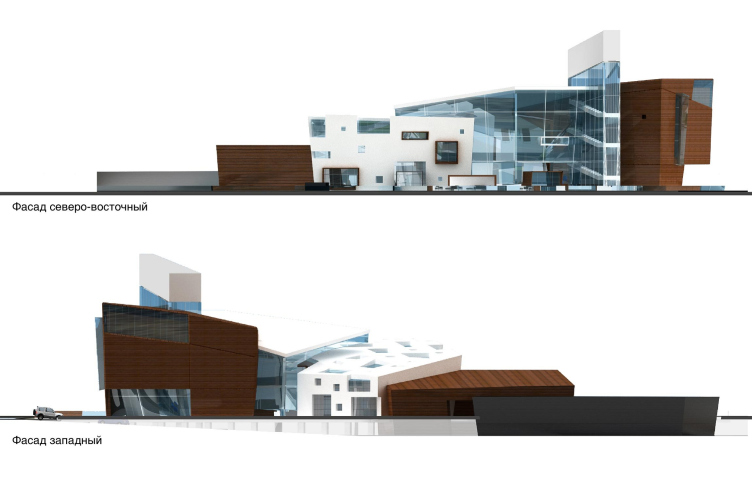Image of a city
Yuri Vissarionov’s architectural studio presented the project of a retail centre located at the entrance to Novgorod from Moscow. Keeping in mind that it will be constructed for Veliki Novgorod, the architects charged the building with Old Russian allusions.
